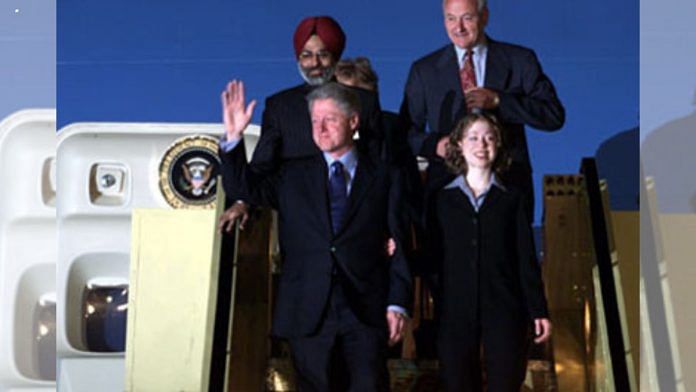New Delhi: It was a regular day in Chittisinghpura village of South Kashmir’s Anantnag on 20 March, 2000. Women were preparing dinner and men were standing by the roadside amid the lush apple orchards when suddenly, all hell broke loose.
A group of gunmen in camouflage outfits swooped in around 7.30 pm, eyewitnesses had told media persons then, asked for Sikh men, gathered them in two groups and made them stand before two gurdwaras on either side of the road.
The memories of the 35 men they shot dead live on—not just as photos on a banner at the entrance of the village but also as a reminder of the massacre that shocked the nation at a time when then US President Bill Clinton was visiting India.
Two years later, on the 14 May 2002, a group of three terrorists attacked a Himachal Road Transport Corporation bus ferrying tourists from Manali to Jammu and Kashmir, near J-K’s Kaluchak.
The assailants, again in Army fatigues, killed seven people after asking them to deboard. They then entered the Army’s family quarters nearby, firing indiscriminately, leaving at least 23 dead including Army personnel and their family members. Among the deceased were women and 10 children between 4 and 10 years of age. Around 34 others were injured.
Two decades later, another attack was unleashed by terrorists Tuesday evening as they targeted tourists holidaying in Pahalgam. As men, women and children were relaxing in the scenic meadows in Baisaran Valley, four terrorists came down form the surrounding jungle. Forty minutes of mayhem followed.
At least 26 men, including a newly married Indian Navy officer on his honeymoon and a foreign national, were shot dead in cold blood. Several others were injured.
The attackers were supposedly hiding, waiting to let loose the horror, taking advantage of the lack of security presence in the area. According to witnesses and survivors, the terrorists asked the men to show their ID cards, chant Islamic verses and shot them from point blank range if they failed.
Security agencies have released the sketches of three of the terrorists and initial reports suggest the attack was orchestrated by the Lashkar-e-Taiba.
The timing of the three attacks suggests a common terror blueprint: unleashing mayhem in Jammu and Kashmir during high-profile foreign visits ostensibly to gain maximum international attention.
Tuesday’s attack came at a time when United States Vice-President J.D. Vance is in India on a four-day visit. The attack on the Sikhs in Chittisinghpura village was carried out when then United States President Bill Clinton was on his first visit to New Delhi. It was the first time in 22 years that a US President was visiting.
At the time of the Kaluchak attack in 2002, the then US Assistant Secretary of State for South Asian Affairs Christina B Rocca was on a visit to India.
A day after the Chittisinghpura carnage, then NSA Brajesh Mishra had reportedly said it was the doing of the Lashkar-e-Taiba and the Hizbul Mujahideen. Islamabad was also blamed as having been hand in glove with the terrorists.
Five days after the bloodshed, then Anantnag Superintendent of Police Farooq Khan had said five foreign militants were killed in Pathribal’s forest. The announcement had come hours after then Home Minister LK Advani’s visit to the valley.
It later turned out to be a fake encounter and the officers were chargesheeted by the CBI for kidnapping, murder and destruction of evidence.
Two men of Pakistani origin, Mohammad Suhail Malik and Wasim Ahmed, were also arrested in September 2000. They were acquitted by a Delhi court in 2011 due to lack of incriminating evidence.
During the Kaluchak attack, three Pakistani terrorists were also killed.
(Edited by Ajeet Tiwari)
Also Read: ‘Terror has a religion,’ says VHP, questions Muslim leaders’ ‘silence’ on Pahalgam attack






